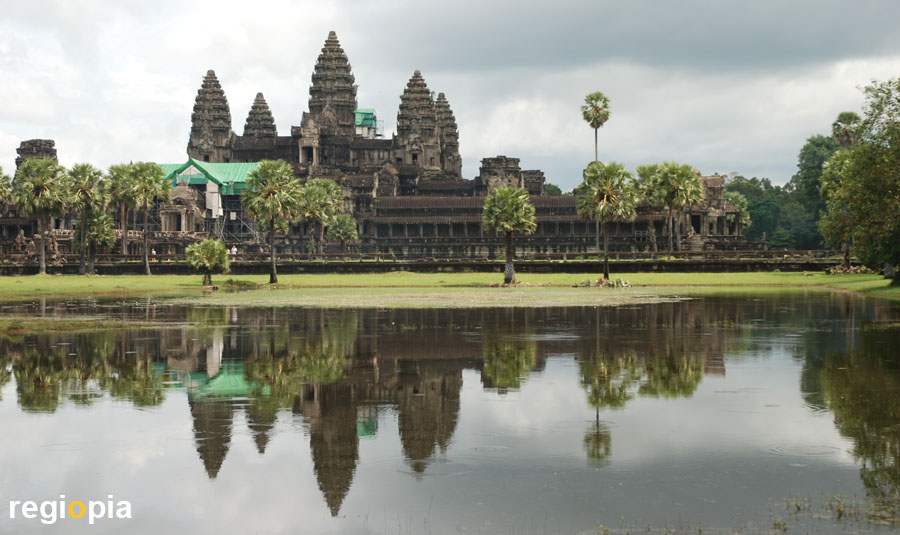
Angkor Wat
Angkor Wat is the most famous temple in Angkor and the most famous landmark of Cambodia. The temple stands on an island in an artificial water basin. One enters the temple complex over a stone bridge decorated with snakes. Once on the island, a high wall with a magnificent gate awaits the visitor. A plain with a 450 m long processional street opens behind the gate, which is about 1 m higher than the surrounding area. When it rains the flat meadow is flooded and you can still walk to the temple. A water surface then forms on the meadow in which Angkor Wat is reflected (photo).
The actual temple is surrounded by an outer and an inner wall. The corners and gates are marked by towers. The long wall surfaces are decorated with ornate reliefs depicting the victory of Suryavarman II or showing religious motifs. If you have left the two walls behind, you stand in front of the inner temple. A steep staircase leads up to the sanctuary. From up here you can look over the trees, because of the steamy, humid air the view is mostly modest.
Between 1113 and 1150 the temple was built for the Hindu god Vishnu. In the 13th century the temple became a Buddhist monastery. Angkor Wat is still used as a temple, so respectful clothing is desirable. Women should cover their shoulders and not wear shorts. Otherwise you are not allowed to enter the temple.
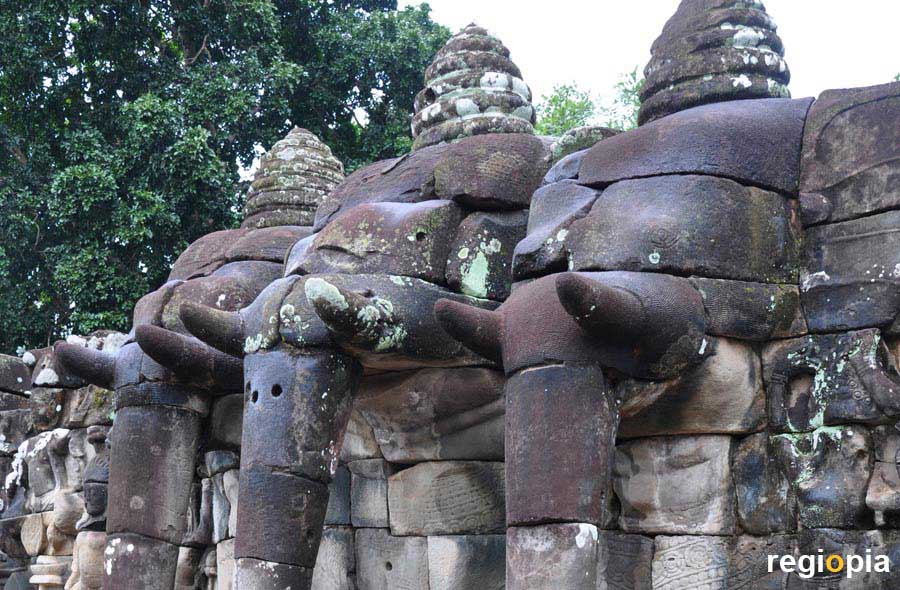
Elephant Terrace
Angkor covers a huge area with many impressive temples. To see the most beautiful temples, you should plan at least 2 days. The easiest way to rent a tuk tuk with a driver for the whole day at your hotel. He will take you to the temples you want to see and knows where to get food along the way. The visit Angkor on foot or by bicycle, is recommended only for very sporty and capable individuals, because of the heat, the rain and the great distances between the temples. The center of Angkor, with some restaurants, is located near the Elephant Terrace at the Royal Palace.
Elephants Terrace, Angkor Thom
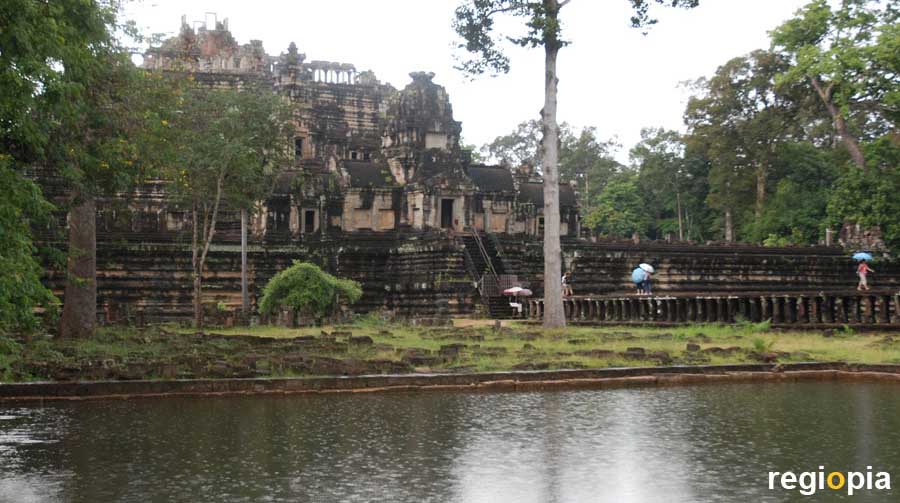
Royal Palace
From the Elephant Terrace you will walk through a gate, to enter the palace district. The Royal Palace was built between the 10-12. century. The central pyramid of Phimeanakas is surrounded by several pools. The actual palace buildings were made of wood and are no longer preserved.
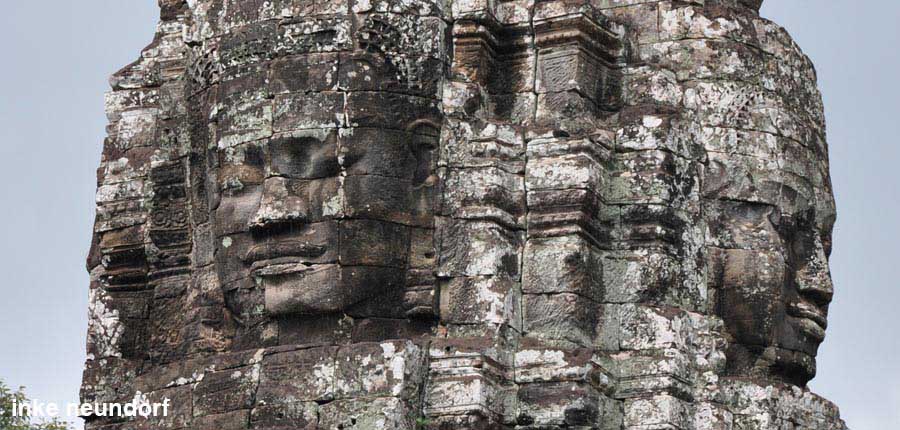
Bayon Temple
"Bayon" was the main temple of the new capital "Angkor Thom", built in the 12th century by Jayavarman VII. Although you can find Hindu deities in Bayon, it is still a Buddhist temple. The Bayon temple is famous for the stone faces of Bodhisattva Lokeshvara, the observer of the world. Then there are the numerous murals with scenes of war, religious motives and charming dancers. The Bayon Temple is one of the most beautiful temples in Angkor.
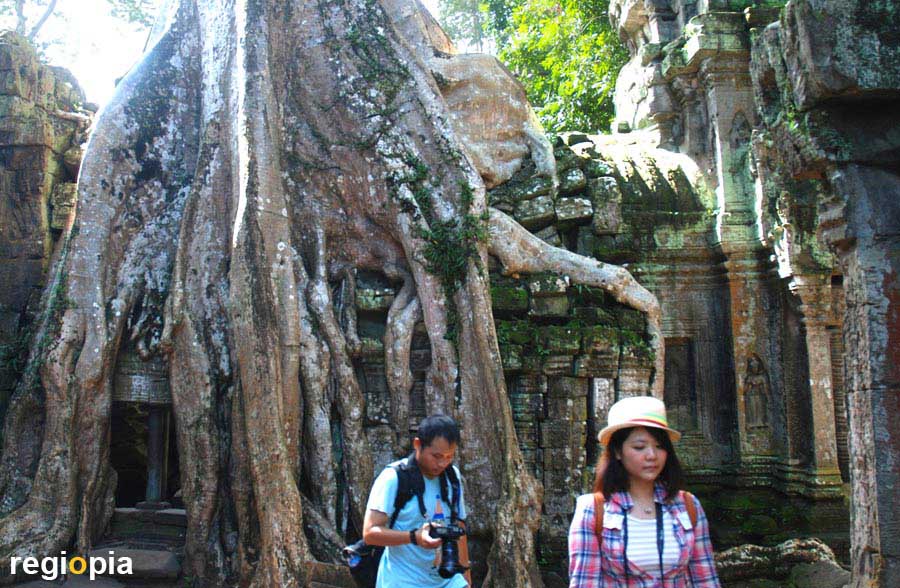
Ta Prohm Temple
"Ta Prohm" looks just like the backdrop of a "Lara Croft" movie. The dilapidated temples are overgrown by giant trees, which slowly crush the buildings with their big roots. "Ta Prohm" was built between the 12th and 13th century under the rule of King Jayavarman VII.
ads
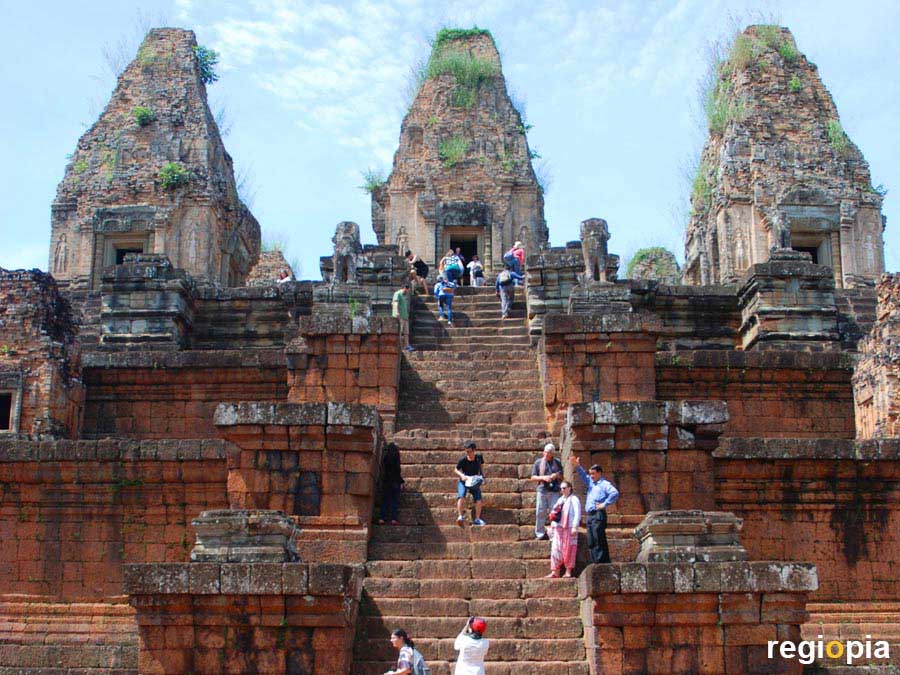
Pre Rup Temple
The "Pre Rup Temple" is not in the dense jungle and its reddish laterite stone is quite different from the temples hidden in the forest. The temple was erected around 962, making it one of the oldest temples of Angkor. "Pre Rup" was the temple of a new capital from the time before Angkor. The three-tiered pyramid was a Hindu temple. The name "Pre Rup" means to embed the corpse. There are beautiful lion and elephant sculptures at the temple. From the top you can see the rice fields and the nearby forest.
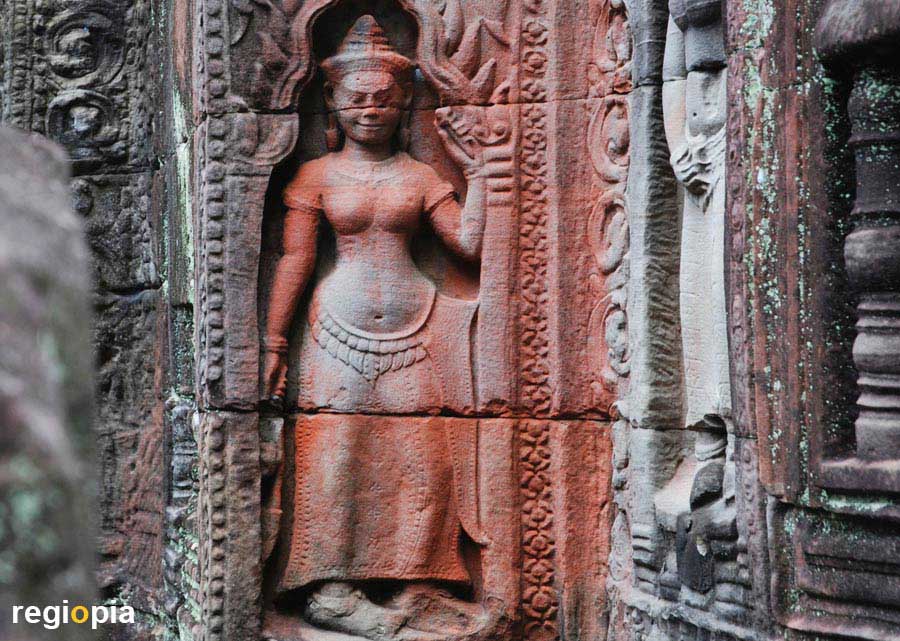
Ta Som Tempel
The small Buddhist temple built in the 12th century, is dedicated to Gaurashrigajaratna, the jewel of the fortunate "White Elephant". Here you will find very well preserved reliefs. Unfortunately, these beautiful reliefs are increasingly broken from the walls by thieves. "Ta Som" is located in the north-east corner of the "Grand Circuit".
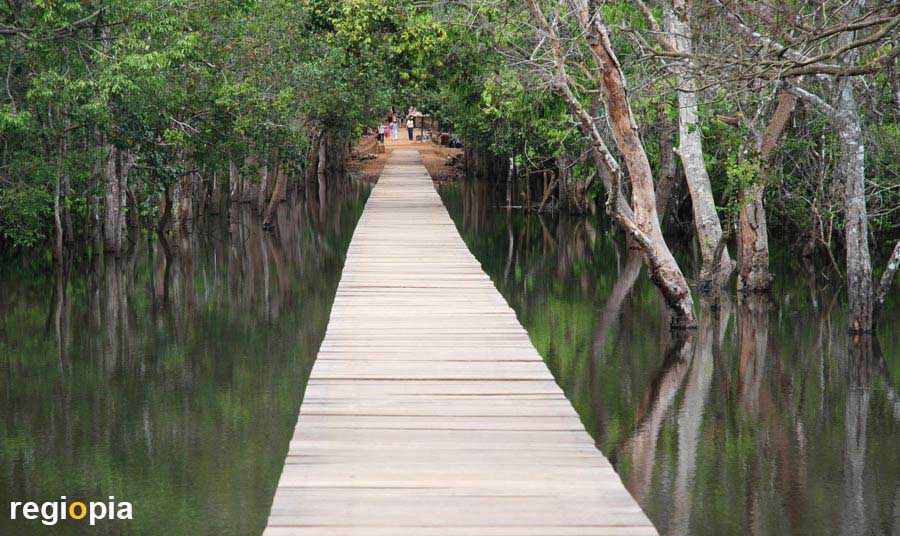
Neak Pean Temple
Neak Pean means devious tails, in the base are two Nagas (snakes). The temple used to be a major pilgrimage site. During our visit you could not enter the Neak Pean temple, but the way over a long boardwalk was still worth it.
Neak Pean, Angkor Grand Circuit
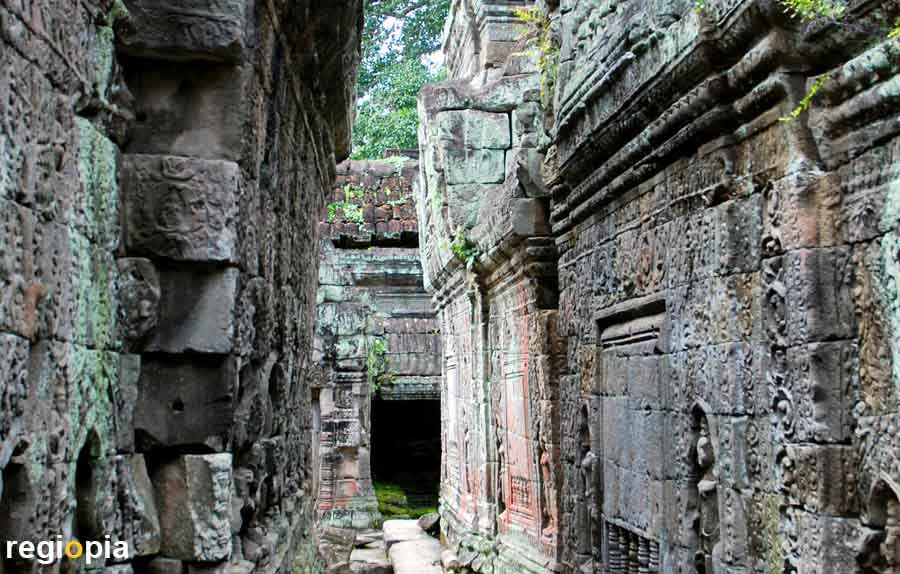
Preah Kahn Temple
Preah Kahn is a large temple formerly known as Nagarajayashri, the happy, victorious city. The complex was built between 1184 and 1191 by Jayavarman VII. The temple was not a purely Buddhist temple but also the home of many Hindu gods. The complex is surrounded by a wall, in each corner of the rectangle there is a pool of water. The temple is very weathered, but it gives an idea of the size and beauty of the former city.
Preah Kahn, Angkor Grand Circuit
Map of Angkor
ads
Travel Guide Angkor
The making of Angkor
Angkor was the capital of the Khmer Empire, which extended to Thailand, Malaysia and Vietnam. The basis of the wealth of Angkor were the gigantic "barays" (water reservoirs). Which ensured lush growth in the dry summer months. The reason for the incredible number of large temples is that each ruler had a new capital built in the Angkor area. So Angkor was not a huge city but an area where many capitals were built.
The fall of Angkor
Around 1431 Angkor was attacked by the Thais. The Khmer Empire was able to repel the attack, but due to its proximity to Thailand shifted its center of power to the south.
Angkor was abandoned as a city, but the temples continued to be used by residents of the region. In 1860 Angkor was rediscovered by the French Henri Mouhot.
ads
ads


